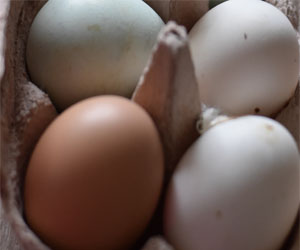


Techniques For Delicious, Safe Meals
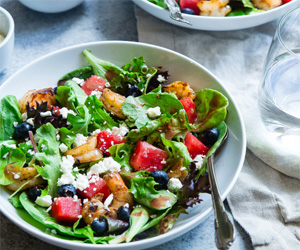
Gluten-free cooking has become increasingly popular as more people are adopting gluten-free diets due to celiac disease, gluten sensitivity, or simply a preference for avoiding gluten. When cooking without traditional wheat-based ingredients, understanding the right techniques is essential to ensure that your meals are both safe and delicious. In this article, we will explore some key gluten-free cooking techniques that can help you achieve outstanding results in the kitchen.
Ingredient Selection: Choosing Gluten-Free Alternatives
The first step in gluten-free cooking is to replace traditional wheat-based ingredients with gluten-free alternatives. Some common substitutions include:
Flours: Swap wheat flour with gluten-free flours like rice flour, almond flour, coconut flour, or a gluten-free all-purpose flour blend. These flours can be used for baking, breading, and thickening.
Grains: Opt for naturally gluten-free grains such as rice, quinoa, buckwheat, and millet for side dishes and grain-based recipes.
Pasta: Numerous gluten-free pasta options made from rice, corn, quinoa, or legume flours are available. Cook them according to the package instructions.
Baking Aids: Xanthan gum and guar gum can help mimic the binding properties of gluten in baked goods. Add them to gluten-free recipes as needed.
Cross-Contamination: Staying Safe
For individuals with celiac disease, even trace amounts of gluten can be harmful. To ensure your gluten-free meals remain safe, take the following precautions:
Separate Utensils: Use separate cutting boards, knives, and kitchen equipment for gluten-free cooking to avoid cross-contamination.
Clean Thoroughly: Ensure that surfaces and equipment are thoroughly cleaned before use. This includes cleaning countertops, oven racks, and utensils.
Label Ingredients: Clearly label gluten-free ingredients to prevent mix-ups, especially if you store gluten-containing and gluten-free products together.
Binding And Texture: Enhancing Your Dishes
Gluten provides structure and texture in many recipes. To mimic these qualities in gluten-free cooking:
Use Binders: Incorporate binding agents like xanthan gum or ground flaxseed mixed with water into recipes to improve the texture of baked goods.
Combine Flours: Blend different gluten-free flours for the best texture. For instance, combining rice flour with potato starch and tapioca flour can yield great results in recipes like pancakes or bread.
Moisture Management: Preventing Dryness
Gluten-free baked goods can sometimes turn out dry or crumbly. Here are some strategies to retain moisture:
Add Moist Ingredients: Include ingredients like applesauce, mashed bananas, or yogurt in recipes to enhance moisture.
Avoid Overmixing: Overmixing gluten-free batters can result in a tougher texture. Mix ingredients until just combined.
Leavening Agents: Achieving the Right Rise
Yeast, baking powder, and baking soda play a crucial role in the rise and texture of gluten-free baked goods. Use them wisely:
Yeast: Gluten-free bread can benefit from longer rising times, as gluten-free dough may take longer to ferment.
Baking Powder And Baking Soda: These leavening agents help baked goods rise. Ensure they are fresh and use according to the recipe's instructions.
Mastering gluten-free cooking techniques can lead to satisfying and safe meals. With the right ingredient choices, vigilant cross-contamination prevention, and thoughtful techniques for binding, texture, moisture, and leavening, you can create delicious and enjoyable gluten-free dishes that cater to a variety of dietary preferences and needs. Gluten-free cooking is not just about dietary restriction; it's about embracing a world of culinary possibilities and enjoying the pleasures of good food, gluten-free.
Exploring The Benefits Of Organic Options
 Supporting Sustainable Agriculture: Organic options are closely linked to sustainable agriculture, which promotes ethical and environmentally friendly practices. Sustainable farming methods not only protect the environment but also support the livelihoods of farmers. By purchasing organic products, you're contributing to a more sustainable and fair agricultural system.
Supporting Sustainable Agriculture: Organic options are closely linked to sustainable agriculture, which promotes ethical and environmentally friendly practices. Sustainable farming methods not only protect the environment but also support the livelihoods of farmers. By purchasing organic products, you're contributing to a more sustainable and fair agricultural system.
Cleaner And Safer Cosmetics: Organic options extend beyond the realm of food. Organic cosmetics and personal care products are also available, offering consumers a safer and more natural way to care for their bodies. These products are typically free from harmful synthetic chemicals, making them a healthier choice for both your skin and the planet.
Transparency And Certification: Organic options are subject to stringent certification standards in many countries. These standards ensure that products labeled as "organic" meet specific criteria. This certification provides consumers with transparency and confidence in the products they purchase.
A Personal Choice With Global Impact: Choosing organic options is a personal decision that can have a significant impact on a global scale. It not only benefits your health and well-being but also contributes to a more sustainable and environmentally conscious future.
Nourishing Your Body And Soul
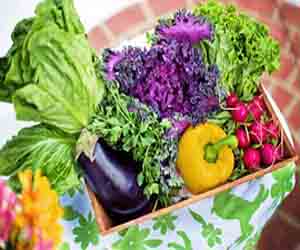 1. Nutrient-Rich Meals: Wholesome cooking allows you to maximize the nutritional value of your meals. By using fresh fruits, vegetables, whole grains, lean proteins, and healthy fats, you ensure that your body receives the essential vitamins, minerals, and antioxidants it needs.
1. Nutrient-Rich Meals: Wholesome cooking allows you to maximize the nutritional value of your meals. By using fresh fruits, vegetables, whole grains, lean proteins, and healthy fats, you ensure that your body receives the essential vitamins, minerals, and antioxidants it needs.
2. Flavorful Dishes: One of the highlights of wholesome cooking is the exceptional flavor of the dishes you prepare. Using fresh and natural ingredients results in meals bursting with taste, aromas, and textures that can't be replicated by processed foods.
3. Control Over Ingredients: Wholesome cooking gives you complete control over what goes into your food. You can avoid excessive salt, sugar, and unhealthy fats, ensuring that your meals align with your dietary preferences and health goals.
4. Mindful Eating: Preparing meals from scratch encourages a mindful approach to eating.
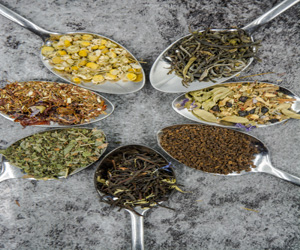 Flavor And Culinary Versatility
Flavor And Culinary Versatility
Natural ingredients infuse dishes with the vibrant flavors and aromas that no artificial additives can mimic. Fresh herbs, spices, and produce can elevate a simple meal into a culinary masterpiece. The versatility of these ingredients is unparalleled; they can be used to create a wide array of dishes that cater to various tastes and dietary preferences, from vegan to omnivorous.
Environmental Stewardship
Choosing natural ingredients is not only beneficial for your health but also for the environment. These ingredients are cultivated with minimal synthetic pesticides and fertilizers, reducing the carbon footprint of your diet. Moreover, supporting sustainable farming practices helps preserve biodiversity, conserve natural resources, and mitigate soil and water pollution. By opting for natural, organic, and locally sourced ingredients, you play a crucial role in the global movement towards sustainable agriculture and food systems.
Elevating Your Culinary Experience
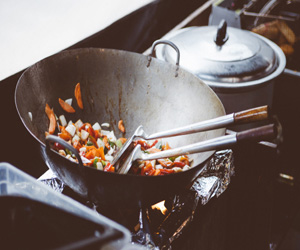 Time Efficiency: One of the most significant benefits of simplified cooking is the time it saves. By using shortcuts, pre-prepped ingredients, and easy-to-follow recipes, you can have a tasty meal on the table in no time. This is particularly valuable for busy individuals and families with packed schedules.
Time Efficiency: One of the most significant benefits of simplified cooking is the time it saves. By using shortcuts, pre-prepped ingredients, and easy-to-follow recipes, you can have a tasty meal on the table in no time. This is particularly valuable for busy individuals and families with packed schedules.
Minimal Ingredients: Simplified cooking often relies on a shorter list of ingredients. You don't need a pantry full of exotic spices and specialty items. Instead, you can create flavorful dishes with basic staples, reducing both cost and clutter in your kitchen.
Easy Cleanup: With fewer pots, pans, and utensils involved, cleanup becomes a breeze. Many simplified recipes are designed for one-pot cooking, reducing the time spent on dishwashing and kitchen tidying.
Versatility: Simplified cooking doesn't mean boring or repetitive meals. With some creativity, you can adapt simple recipes to your tastes by adding or substituting ingredients.
The Key To Stress-Free Cooking
 Why does kitchen efficiency matter? In a nutshell, it's the difference between an enjoyable cooking experience and a stressful chore.
Why does kitchen efficiency matter? In a nutshell, it's the difference between an enjoyable cooking experience and a stressful chore.
Here are a few reasons why it's worth investing in kitchen efficiency:
1. Time-Saving: In our busy lives, time is a precious commodity. An efficient kitchen allows you to prepare meals more quickly, leaving you with more time for other important aspects of your life.
2. Reduces Stress: A cluttered, disorganized kitchen can add unnecessary stress to your meal preparation. Efficiency streamlines the process, so you can enjoy cooking without frustration.
3. Promotes Healthy Eating: When your kitchen is well-organized, you're more likely to make nutritious choices. Access to fresh ingredients and efficient tools can lead to better meal planning.
Nourishing The Body And Soul
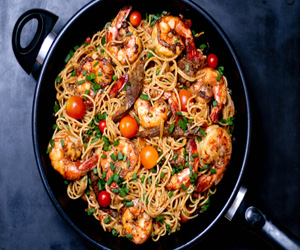 The Appeal Of Hearty Meals
The Appeal Of Hearty Meals
There are several reasons why hearty meals remain so popular and beloved:
1. Comfort In A Dish: Hearty meals offer the kind of comfort that can only come from food made with love and care. They're reminiscent of family gatherings, holiday feasts, and cherished traditions.
2. Sustenance: Beyond the emotional connection, hearty meals provide the sustenance our bodies crave. They often include a balanced combination of protein, fiber, and carbohydrates, making them satisfying and energizing.
3. Versatility: Hearty meals come in various forms, from stews and casseroles to roasts and pastas. This versatility means there's a hearty meal for every palate and occasion.
4. Timelessness: The appeal of hearty meals is timeless. They've been cherished for generations, and their flavors and textures continue to stand the test of time.
5. Celebratory Nature: Hearty meals often take center stage at celebratory gatherings. Think of Thanksgiving dinners, Sunday roasts, or holiday potlucks. These occasions revolve around the joy of sharing a hearty meal with loved ones.
Examples Of Hearty Meals
Beef Stew: A classic, comforting dish with tender chunks of beef, potatoes, and vegetables simmered in a savory broth.